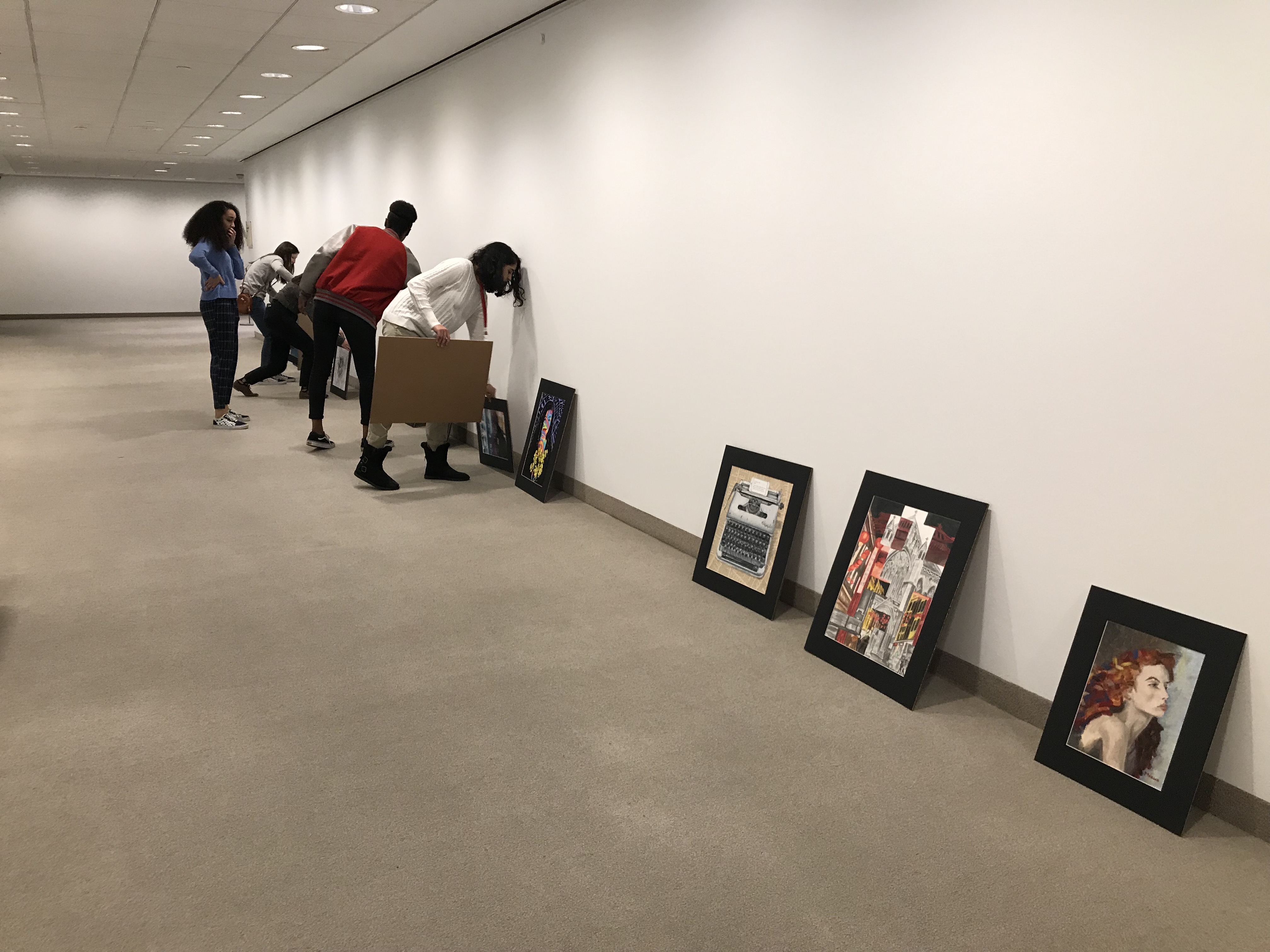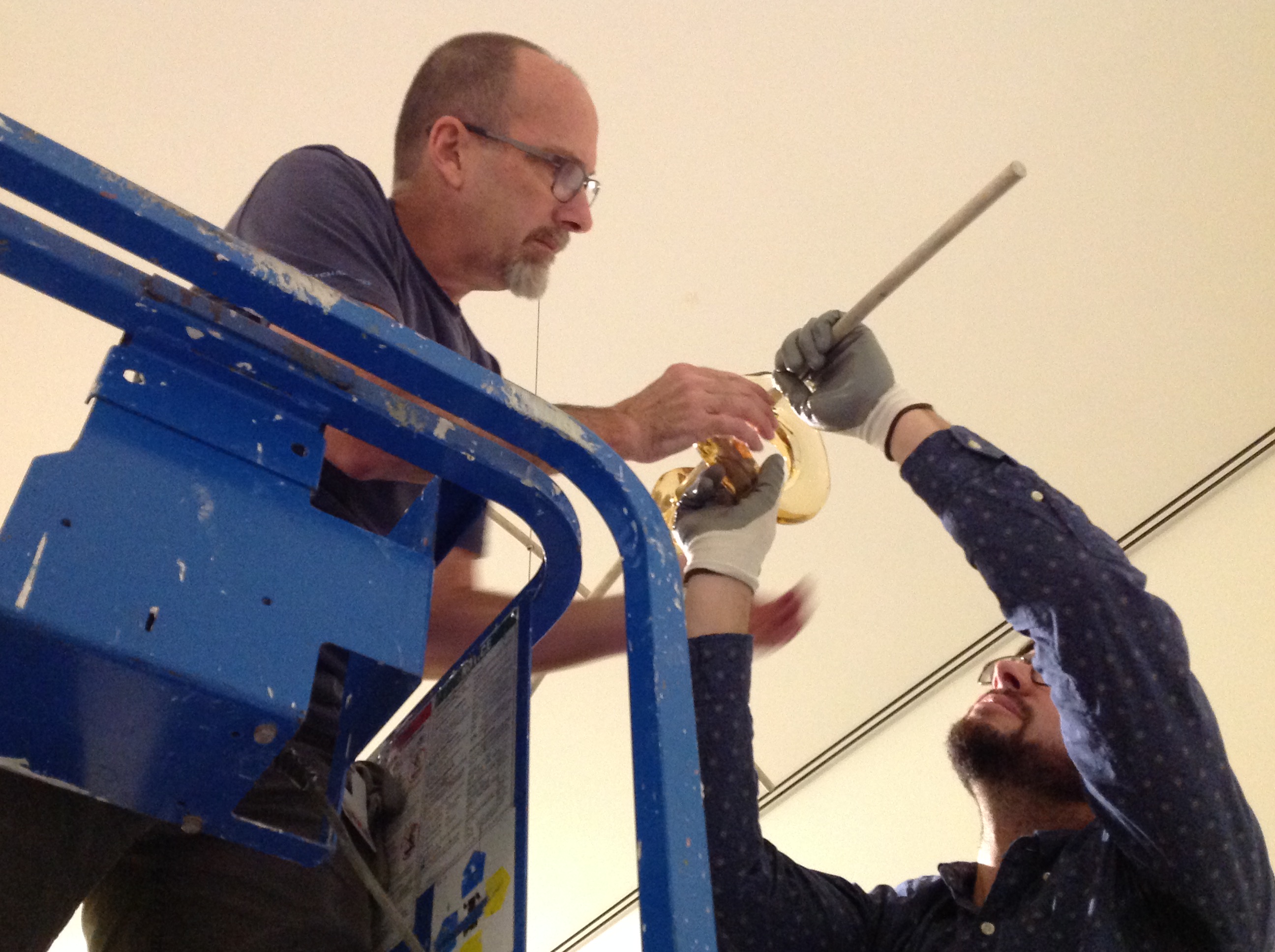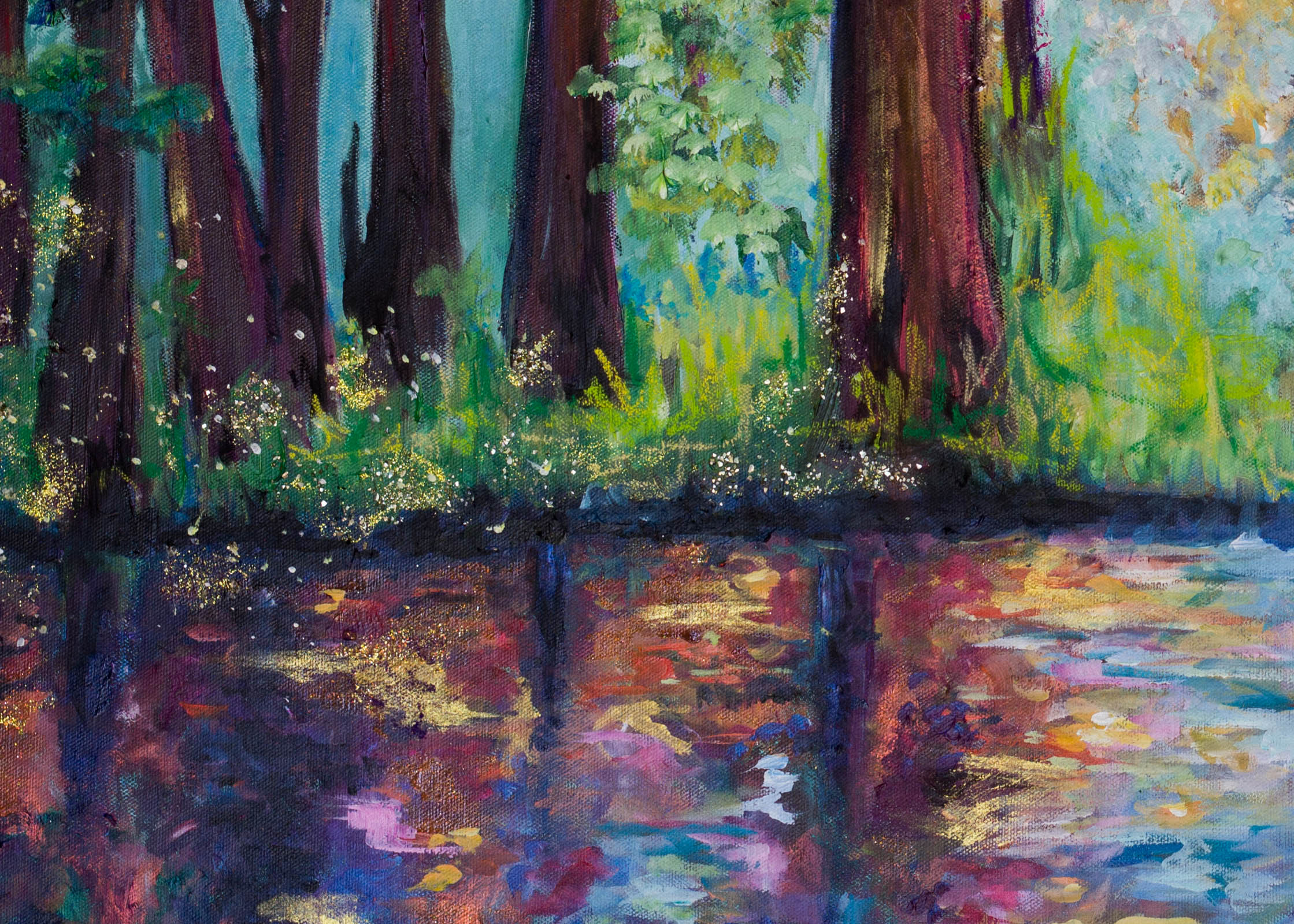As the Dallas Museum of Art’s Digital Collections project comes to a close at the end of December, we’re taking a look back at the important work the Digital Collections Content Coordinators (D3Cs) have undertaken over the past three years, including writing, researching, gathering, compiling, and condensing information for over 5,000 individual objects. Their end result is an online collection that takes advantage of its digital format. Unlike the physical limitations of the DMA galleries, the online collection promotes three unique learning opportunities:
- Connecting the dots—linking objects and narratives across collections or disciplines.
- Deep dives—providing detailed information about one or more objects in texts that far exceed typical wall labels.
- Hidden gems—highlighting works that are rarely on view or risk being overlooked in the galleries.
We’ve asked each D3C to recount some of the insights she accumulated on the job.
Jennifer Bartsch-Allen, Decorative Arts and Design, 2016-2018

Hidden gem:
Although I’ve researched a variety of works across the Decorative Arts and Design Collection, the bulk of my last two years was focused on the Wendy and Emery Reves Collection. This enabled me to draw attention to furniture, including a Baroque cabinet by Pierre Gole. In the gallery, the cabinet remains closed and distant. Online, however, the high-res photos show the drawers in multiple positions and give close-ups of signatures and surfaces. Supplemental essays include biographies of the collectors and definitions of some of the specialized terms.
 Cabinet on stand, Pierre Gole, Paris (?), France, 1660–80, wood, ivory, tortoiseshell, shell, and gilt bronze, Dallas Museum of Art, The Wendy and Emery Reves Collection, 1985.R.573.a-c
Cabinet on stand, Pierre Gole, Paris (?), France, 1660–80, wood, ivory, tortoiseshell, shell, and gilt bronze, Dallas Museum of Art, The Wendy and Emery Reves Collection, 1985.R.573.a-c
Deep dives:
One of my favorite eras is 20th-century design, so I thoroughly enjoyed exploring works featured in the Museum’s South Gallery. At first glance, Peter Muller-Munk’s relatively modest Normandie shape pitcher appears straightforward and functional. However, it becomes much more impressive and influential after reading about its context in American streamlined design.
 Normandie shape pitcher, Peter Muller-Munk, Rome, New York, 1935, chrome-plated brass, Dallas Museum of Art, 20th Century Design Fund, 1996.27
Normandie shape pitcher, Peter Muller-Munk, Rome, New York, 1935, chrome-plated brass, Dallas Museum of Art, 20th Century Design Fund, 1996.27
Similarly, the historical references in René Jules Lalique’s glass vases become easier to identify once you recognize the popularity of neoclassical imagery at the time. Several, including the Denaides vase, rely on these mythological motifs while simultaneously embodying the early 20th century’s Art Deco movement.
 Danaides vase, René Jules Lalique, Lalique et Cie, Cristallerie, Wingen-sur-Moder, France, c. 1926, molded glass, Dallas Museum of Art, gift of Mr. and Mrs. Michael Steinberg, 2004.48.5
Danaides vase, René Jules Lalique, Lalique et Cie, Cristallerie, Wingen-sur-Moder, France, c. 1926, molded glass, Dallas Museum of Art, gift of Mr. and Mrs. Michael Steinberg, 2004.48.5
Heather Bowling, Classical Art, Contemporary Art, and Decorative Arts and Design, 2016-2018

Deep dives:
Throughout the course of this project, I have enjoyed learning more about contemporary art and decorative arts and design, but it was fun to return to my classical roots and do some original research on a 2nd century CE portrait bust. The DMA’s Roman portrait head of a young woman joins an array of Roman portraits that reflect ideas about gender roles in the ancient world. Spoiler alert: portraits of modest, fertile, upper-class women were created largely to boost the public stature of the men in their lives. Additionally, elaborate hairstyles of wealthy Roman women imitated favored empresses and indicated the wearer’s high status, not unlike today’s celebrities.
 Portrait head of a young woman, Roman, 2nd century CE, marble,
Portrait head of a young woman, Roman, 2nd century CE, marble,
Dallas Museum of Art, gift of David T. Owsley via the Alvin and Lucy Owsley Foundation, 2016.36
Accessioned just three years after its creation, Cathedral is the cornerstone of contemporary art at the DMA and one of the first Pollock drip paintings to enter any museum collection in the world. Because this work is so prolific, I had to wade through a substantial amount of scholarship to create a concise description that answers the question you may be asking yourself: why is throwing paint on a canvas a big deal?
 Jackson Pollock, Cathedral, 1947, enamel and aluminum paint on canvas,
Jackson Pollock, Cathedral, 1947, enamel and aluminum paint on canvas,
Dallas Museum of Art, gift of Mr. and Mrs. Bernard J. Reis, 1950.87, © Pollock-Krasner Foundation/Artists Rights Society (ARS), New York
Hidden gems:
In the galleries it would be easy to pass by this minuscule scarab beetle, but online you can zoom in and inspect each side. Although initially there was no information available about the inscription on its underside, extensive research of Egyptian amulets revealed exactly how it afforded the deceased special protection in the journey to the afterlife.
 Scarab, Egyptian, 1785–1550 BCE, faience, Dallas Museum of Art, given in memory of Jerry L. Abramson by his estate, 2009.25.4
Scarab, Egyptian, 1785–1550 BCE, faience, Dallas Museum of Art, given in memory of Jerry L. Abramson by his estate, 2009.25.4
Connecting the dots:
Alongside my work in the Contemporary and Classical Art departments, researching modern design and postmodern design illuminated the intersection of ancient and contemporary objects, and gave me a new appreciation for how an encyclopedic museum collection can demonstrate the connections between different places and times.
Stay tuned for Part II, coming next week. Meet the other half of our D3C team and discover more insights into our collection!







 Cabinet on stand, Pierre Gole, Paris (?), France, 1660–80, wood, ivory, tortoiseshell, shell, and gilt bronze, Dallas Museum of Art, The Wendy and Emery Reves Collection, 1985.R.573.a-c
Cabinet on stand, Pierre Gole, Paris (?), France, 1660–80, wood, ivory, tortoiseshell, shell, and gilt bronze, Dallas Museum of Art, The Wendy and Emery Reves Collection, 1985.R.573.a-c Normandie shape pitcher, Peter Muller-Munk, Rome, New York, 1935, chrome-plated brass, Dallas Museum of Art, 20th Century Design Fund, 1996.27
Normandie shape pitcher, Peter Muller-Munk, Rome, New York, 1935, chrome-plated brass, Dallas Museum of Art, 20th Century Design Fund, 1996.27 Danaides vase, René Jules Lalique, Lalique et Cie, Cristallerie, Wingen-sur-Moder, France, c. 1926, molded glass, Dallas Museum of Art, gift of Mr. and Mrs. Michael Steinberg, 2004.48.5
Danaides vase, René Jules Lalique, Lalique et Cie, Cristallerie, Wingen-sur-Moder, France, c. 1926, molded glass, Dallas Museum of Art, gift of Mr. and Mrs. Michael Steinberg, 2004.48.5
 Portrait head of a young woman, Roman, 2nd century CE, marble,
Portrait head of a young woman, Roman, 2nd century CE, marble, Jackson Pollock, Cathedral, 1947, enamel and aluminum paint on canvas,
Jackson Pollock, Cathedral, 1947, enamel and aluminum paint on canvas, Scarab, Egyptian, 1785–1550 BCE, faience, Dallas Museum of Art, given in memory of Jerry L. Abramson by his estate, 2009.25.4
Scarab, Egyptian, 1785–1550 BCE, faience, Dallas Museum of Art, given in memory of Jerry L. Abramson by his estate, 2009.25.4 Objects Conservator Fran Baas adjusts the laser-cut polyester lace on Iris van Herpen’s Voltage Dress.
Objects Conservator Fran Baas adjusts the laser-cut polyester lace on Iris van Herpen’s Voltage Dress. A team of preparators works on lowering the two pieces of Najla El Zein’s Seduction onto the platform. Each piece of the sculpture weighs approximately 1,500 pounds and needs to be moved with a gantry crane. The lower stone was placed first, and then the upper stone had to be carefully lowered onto it.
A team of preparators works on lowering the two pieces of Najla El Zein’s Seduction onto the platform. Each piece of the sculpture weighs approximately 1,500 pounds and needs to be moved with a gantry crane. The lower stone was placed first, and then the upper stone had to be carefully lowered onto it. Fran Baas, Lance Lander, and Mike Hill review the instructions for assembling Faye Toogood’s Tools for Life Mobile 2. Because the components of the mobile are heavy, the team had to know exactly what to do to minimize unnecessary handling.
Fran Baas, Lance Lander, and Mike Hill review the instructions for assembling Faye Toogood’s Tools for Life Mobile 2. Because the components of the mobile are heavy, the team had to know exactly what to do to minimize unnecessary handling. Mike Hill and John Lendvay work to assemble Tools for Life Mobile 2 as it hangs from the ceiling.
Mike Hill and John Lendvay work to assemble Tools for Life Mobile 2 as it hangs from the ceiling. Doug Velek takes measurements for the two pieces of jewelry by Katie Collins. Prior to installing the work, the preparators made the wedges and lifts used to display the jewelry in the exhibition. After confirming that the necklaces were centered on the wedge, preparators used pins to secure them in place.
Doug Velek takes measurements for the two pieces of jewelry by Katie Collins. Prior to installing the work, the preparators made the wedges and lifts used to display the jewelry in the exhibition. After confirming that the necklaces were centered on the wedge, preparators used pins to secure them in place. Curator Sarah Schleuning and preparator Russell Sublette discuss the placement of the three stools by Faye Toogood.
Curator Sarah Schleuning and preparator Russell Sublette discuss the placement of the three stools by Faye Toogood.



























